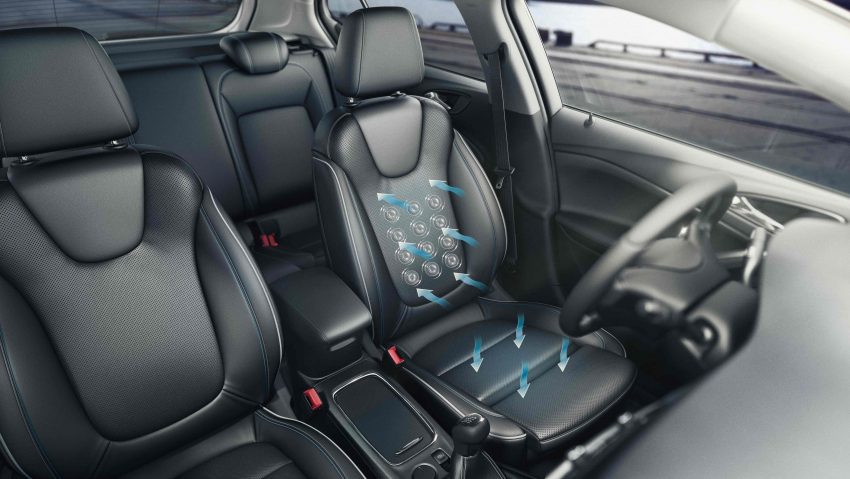Before we dive into Opel’s latest seat-engineering innovations, let’s have a look at some of the more notable points of its history in the field of booty-gratifying comfort.
In 1899 the first seat starts out as a non-adjustable box seat in the Opel Patent Motor Car System Lutzmann. By 1950 the seats are substantially more comfortable, including the seats of the Opel Olympia which were fixed to a metal frame with an adjustable longitudinal position. In the ’70s, Opel fits certain model ranges with a headrest options; the Opel Diplomat B was available with heigh-adjustable comfort headrests, which could also be tilted forwards. Within the same decade, the first heigh adjustable seat would appear in the Opel Monza.
In 2003, the Aktion Gesunder Rücken e.V. gave the 18-way electrically adjustable multi-contour driver seat in the Opel Vectra/Signum its seal of appoval, making Opel the first carmaker to offer back-friendly seats in the midsize class. In 2012 the combination of FlexDoors, the FlexFix bicycle carrier, and AGR-certified ergonomic seats leads the AGR to award the Meriva with its seal of approval for the entire vehicle concept, making it the first and only serial production car to receive the honor. And in 2015, the AGR-certified premium ergonomic seats of the new Astra were optionally available with even more comfort features such as massage function, memory function, and ventilation.
Today, Opel continues to push the envelope when it comes to comfort, and does so with the help of Bernd, Werner, Oliver and Marius – inspection robots in test lab of the Opel International Technical Development Center in Rüsselsheim. The robots consist of a friction pad covered in a denim-like material and a foam layer to simulate an actual passenger getting in and out of the seat, about 50,000 times a week actually.
The testing is performed on both the premium and ergonomic seats as Opel aims to have the AGR seal of approval sown onto both seats. Performing such tests allows the engineers to determine whether or not the design can withstand long-term usage.
“The color has normally faded and the surface is scratched but the most important thing is that the foam underneath is ok and that the surface structure remains stable,” explains seating expert Andrew Leuchtmann, Senior Manager Interiors at GM Europe.
The testing has led to new designs for the seating of the Astra Sports Tourer, which sees a 10 kilogram weight reduction thanks to lightweight steel. These comforting innovations will eventually find their way into other Opel vehicles including the Mokka, Cascada, GTC, Meriva, Zafira Tourer, and Insignia.














Comment
What?! This stuff has been happening for years in the construction and mining industry. However, in C & M, we also have the significant added challenge of suspended seat ride performance.